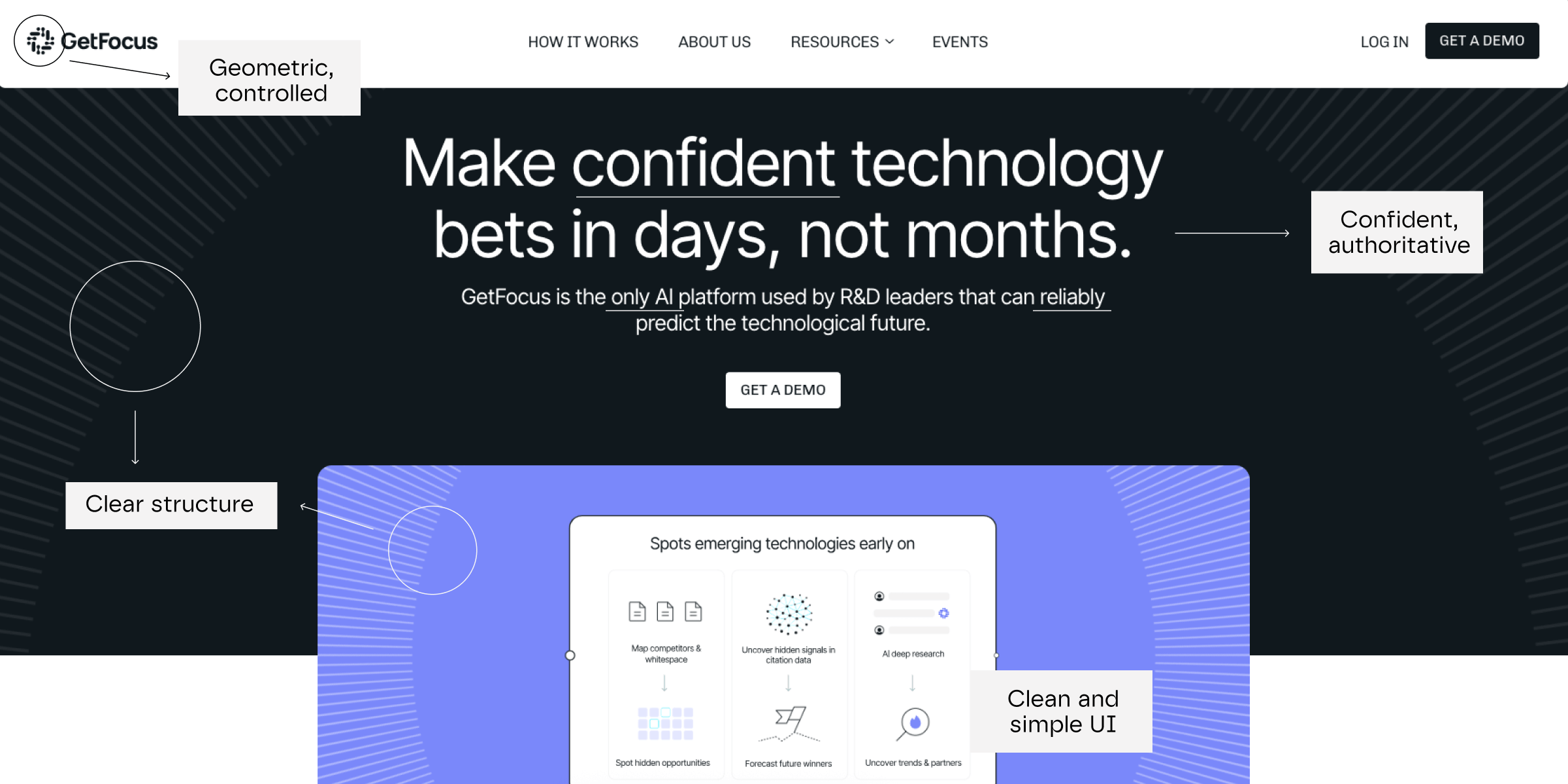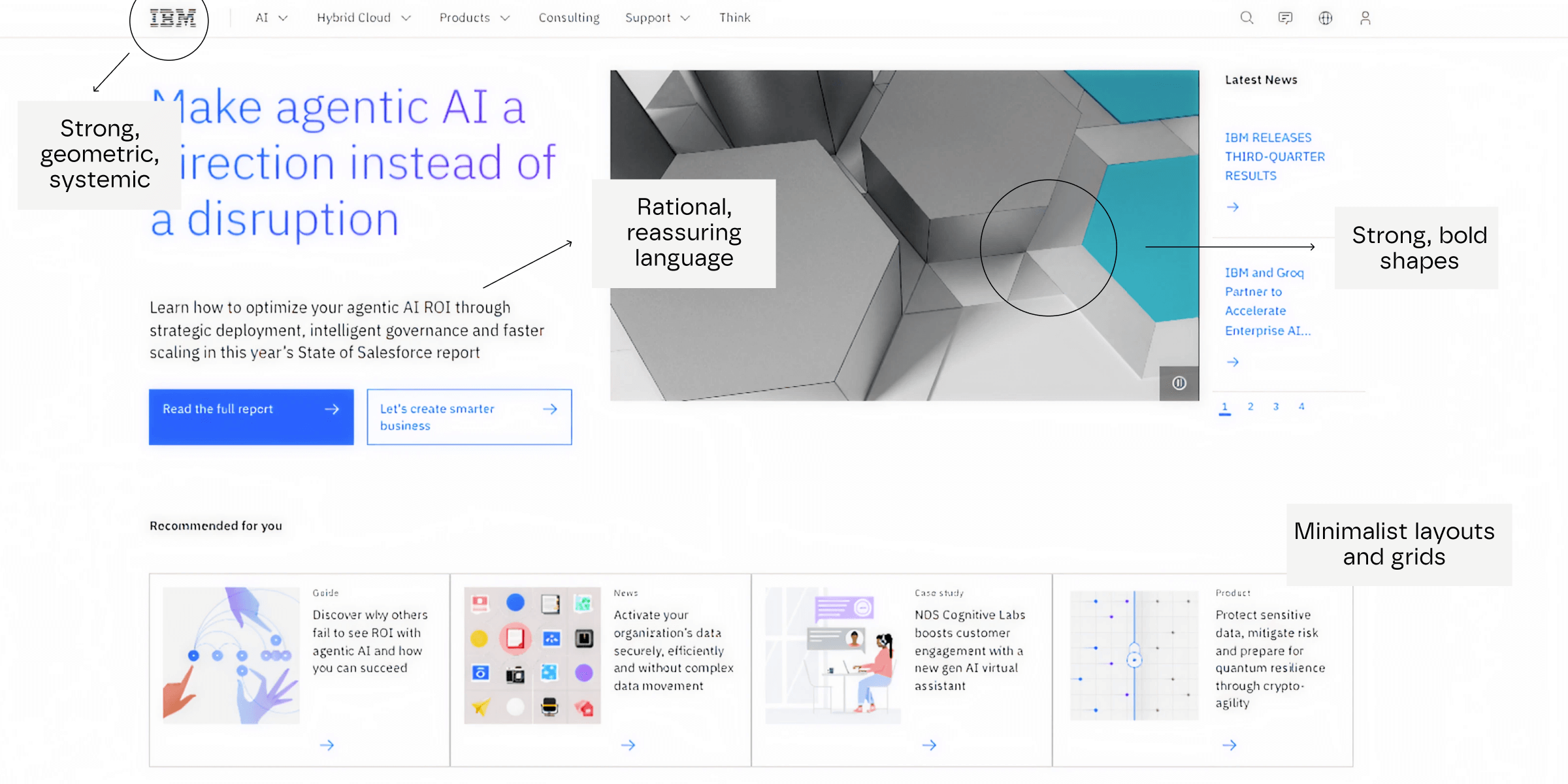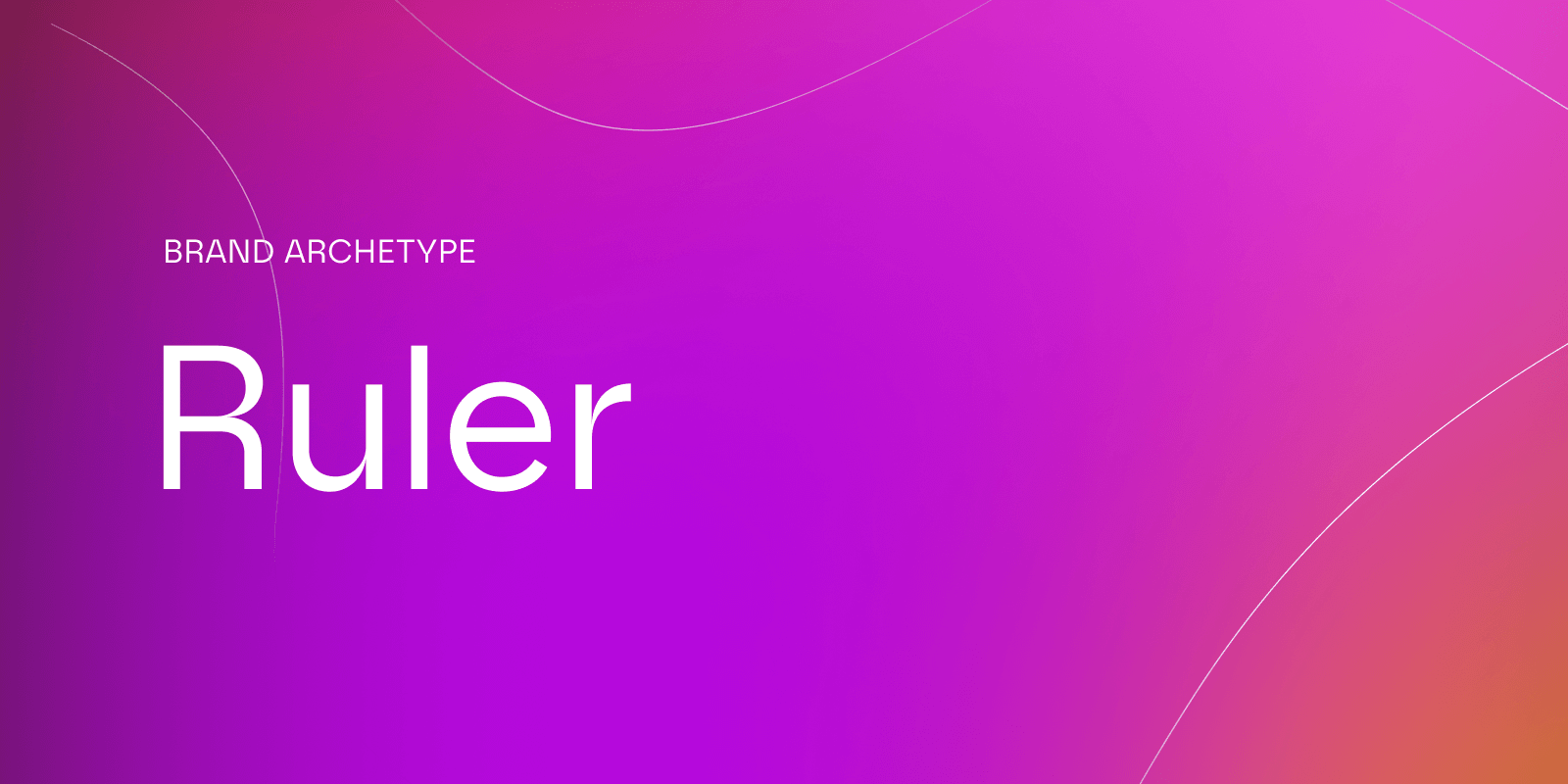We won’t talk about IBM and AWS in this blog post. This is about creating a Ruler brand for your tech startup; for those who haven’t reached Series E funding (yet!).
What’s for sure, though, is that we can learn from such big brands: they build authority, trust, and long-term credibility; characteristics of Ruler brands that don’t fail to make an impact.
Ruler brands don't just compete; they set industry standards. They create order from complexity and establish themselves as the reliable choice when stakes are high. For tech startups entering enterprise markets, regulated industries, or sectors where trust matters most, the Ruler archetype offers a strategic path to sustainable growth and market leadership.
In this comprehensive guide, you learn how tech startups can identify, develop, and execute a successful Ruler brand strategy that resonates with users seeking stability, authority, and proven results.
What is a Ruler brand?
What makes a Ruler brand different?
Ruler brand example 1: Airtable
Ruler brand example 2: GetFocus
Ruler brand example 3: IBM
Is my startup a Ruler brand?
How does my startup become a Ruler brand?
What is a Ruler brand?
The Ruler represents authority, control, stability, and leadership. These brands position themselves as industry standards, creating structure and order for their customers.
Ruler brands embody these essential characteristics:
Authority and expertise: They position themselves as industry thought leaders, expressing this by a bold visual identity that is confident and strong.
Reliability and structure: Ruler brands are straightforward and don’t have time for much decor. They communicate dependability and order through visuals and messaging, e.g. by structured layouts and a clear, concise tone of voice.
The promise these brands make is clear: "You can trust us to set the standard and maintain control." Rather than offering excitement or disruption, they provide security, structure, and long-term stability.
For tech startups, the Ruler archetype works particularly well in industries where compliance, governance, and reliability are essential: think enterprise SaaS, cybersecurity, fintech, and infrastructure solutions.
What makes a Ruler brand different?
The Ruler brand mindset
Ruler brands approach business with a fundamentally different perspective than other archetypes. They focus on creating lasting value through established systems, proven methodologies, and consistent performance.
Long-term vision over quick wins: Ruler brands invest in sustainable growth strategies rather than pursuing rapid market capture. They build infrastructure, processes, and relationships designed to last decades, not quarters.
Standards-setting leadership: Instead of following market trends, Ruler brands establish the benchmarks others aspire to meet. They create industry standards, best practices, and frameworks that define excellence in their sector.
Trust through consistency: These brands earn customer loyalty by delivering predictable, high-quality results across every interaction. Their reputation grows through steady performance rather than dramatic breakthroughs.
How Ruler brands differ from Heroes
While Hero brands inspire customers to achieve greatness and overcome challenges, Ruler brands provide the structure and stability needed for consistent success. This distinction matters significantly in tech startup branding strategy.
Hero brands say: "Follow us to lead transformation"
Ruler brands say: "Trust us and you will lead the long way"
Hero brands thrive on energy and inspiration, while Ruler brands succeed through dependability and expertise. For tech startups, choosing between these approaches depends on market needs, customer preferences, and long-term business objectives.
Examples of Ruler Brands in Tech
Airtable: Clarity and structure

Airtable helps organizations create order from complexity. As a platform that blends the flexibility of a spreadsheet with the structure of a database, Airtable gives users control over their information and workflows. Its brand identity revolves around clarity, organization, and empowerment, allowing teams to build systems that fit their needs with confidence and precision.
How does Airtable’s branding reflect the Ruler archetype?
- Isotype: Airtable’s geometric isotype, resembling a structured table or building block, symbolizes order, logic, and stability. It’s approachable yet authoritative.
- Design: Clean interfaces, clear hierarchies, and calm pastel tones express a sense of composure and control. Visuals highlight functionality and structure over emotion.
- Tone of voice: Calm, confident, and empowering. Airtable communicates authority through clarity.
GetFocus: Leading innovation through focus

GetFocus embodies the Ruler archetype by helping R&D teams make smarter, faster, and more confident decisions. It transforms complex data into clear, actionable insights, positioning itself as the strategic command center for innovation-driven organizations. Rather than adding noise, GetFocus brings structure, governance, and authority to research workflows — ensuring that decisions are informed, aligned, and impactful.
How does GetFocus’s branding reflect the Ruler archetype?
- Isotype: The geometric shape symbolizes focus and clarity: a visual cue of leadership and control, directly related to the brand name and value proposition.
- Visual identity: Primarily in black and white, the color palette communicates authority and trust. Blue accent hues give personality while connecting the brand to technology. Simplified UI visuals are clean and straightforward. Backgrounds reminding of a focusing lens connect the design again to the name and to the value proposition.
- Tone of voice: Confident yet accessible, GetFocus speaks as an advisor: calm, authoritative, and insight-driven.
IBM: Setting the standard through authority

IBM has positioned itself as a Ruler brand by defining what technological leadership looks like for over a century. IBM has built its identity on trust, stability, and order. It doesn’t chase trends, it remains a straightforward, clean, and structured brand.
How does IBM’s branding reflect the Ruler archetype?
- Logo: Designed by Paul Rand, the striped IBM logo symbolizes clarity, precision, and strength. Its geometric consistency mirrors the company’s systematic approach to innovation and leadership.
- Branding: Minimalist layouts, strong grids, and blue tones communicate trust and authority. Every visual element reinforces discipline and consistency. Strong and bold shapes in visuals reflect reliability and stability.
- Tone of voice: Clear, direct, and professional. The focus on rational and reassuring language, rarely getting emotional.
Is my startup a Ruler brand?
Not every business is born a Ruler brand, but many can become one. The most successful Ruler brands share specific characteristics and market conditions.
Signs your startup fits the Ruler archetype
- Stability and reliability: You emphasize long-term partnerships over short-term gains? Your customers choose your solution specifically because they trust your company to deliver consistent results.
- Authority and expertise: You want to be recognized as a thought leader in your industry.
- Structure and governance: Your product creates order from complexity. You help customers establish processes, maintain compliance, or implement systematic improvements.
Reflective questions to assess Ruler brand potential
Evaluate if you are a Ruler brand:
Dependability and resilience: Do you offer a solution that brings structure to chaos or that is looking to dominate a certain area?
Industry leadership: Are you operating in sectors like finance, healthcare, or legal services? Do you provide content like in-depth insights to demonstrate your domain expertise and establish new frameworks?
Visual structure: What elements of your visual identity express structure, strength, and durability?
Authoritative tone: Is your communication formal, authoritative, and focused on expertise? Do you speak with confidence about your capabilities without resorting to hype or emotional appeals?
How does my startup become a Ruler brand?
Follow these steps to build a powerful Ruler brand.

1. Create the foundation with a strong brand strategy
Start by defining your mission, vision, and purpose. Embody Ruler principles like determination, authority, and expertise without sounding overly harsh or over-the-top. Ground your brand values in courage, reliability, and leadership, positioning your startup as a dependable guide that sets industry standards.
This guide helps you get started with your strategy.
2. Signal leadership and expertise through visuals
Your visual identity should reflect the structured, authoritative nature of the Ruler archetype. Choose a sophisticated color palette that conveys stability and trust. Select typefaces that project authority and readability. Avoid trendy or experimental visuals in favor of established, professional options.
3. Communicate clearly
Across all content, maintain a formal, professional tone. Avoid casual language or emotional appeals that might undermine your authoritative positioning. However, don’t fall into sounding harsh or dry.
4. Establish thought leadership
Ruler brands set new standards and those should be backed by domain expertise. Create educational resources that demonstrate your expertise. Case studies, white papers, and best practice guides work better than inspirational blog posts or viral content. Establish your team as industry experts through speaking engagements, industry publications, and strategic partnerships with established organizations.
5. Partner with experienced branding professionals
You need experts who understand both the Ruler archetype and the tech industry. The right tech branding agency can help translate your leadership and domain expertise into compelling visual identity and communication systems.
You don’t need to be IBM or AWS to become a Ruler brand. Even at early stages, tech startups can look authoritative and dominant with the right strategy and visual and verbal identity.
It’s all about aligning your product to your values and translating your values into a brand that works.
Further reading:
https://www.ebaqdesign.com/blog/ruler-archetype
